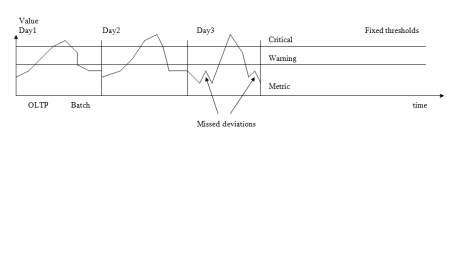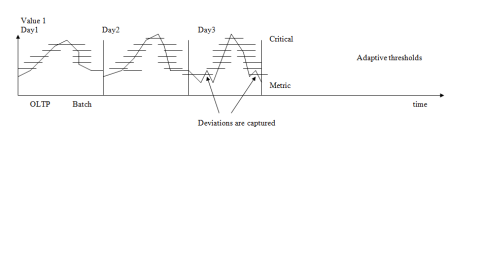The 2 pictures at the bottom of the page show the clear advantage of the adaptive treholds over fixes tresholds. With fixed thresholds, we see that some deviation can be missed. More than that, the workload is not the same for OLTP and DW. So what is the unexpected value for OLTP may not be for DW. The adaptive tresholds is a learned curve, based on the past of your system activity, and is used to compare with your database behaviour in the future.
There are 2 types of adaptive tresholds, “Percentage of Maximum” and “Significance level“.
If we understand what is “Percentage of Maximum“, it is easier to understand the meaning of “Significance level“.
Percentage of Maximum is simply 99% of the observed value. If we set 100 as a treshold value for a metric X (ex.physical reads per second) , then the alert will be sent when we have 99 physical reads per seconds. (In fact, there is another parameter called Occurencies, that indicates how many consecutive occurencies must happened before the alert is generated)
But what is the “Significance level” ?
As per Oracle documentation, there can be several levels of severity.
High 95%
Very High 99%
Severe 99.9t%
Extreme 99.99%
This means that with “Extreme Significance Level” Oracle will alert on values that we would only expect to see once in a 10000 observations.
The curve of the adaptive treshold will be drawn to reflect it.
So, this method is used to capture unusual events and to alert on them.


